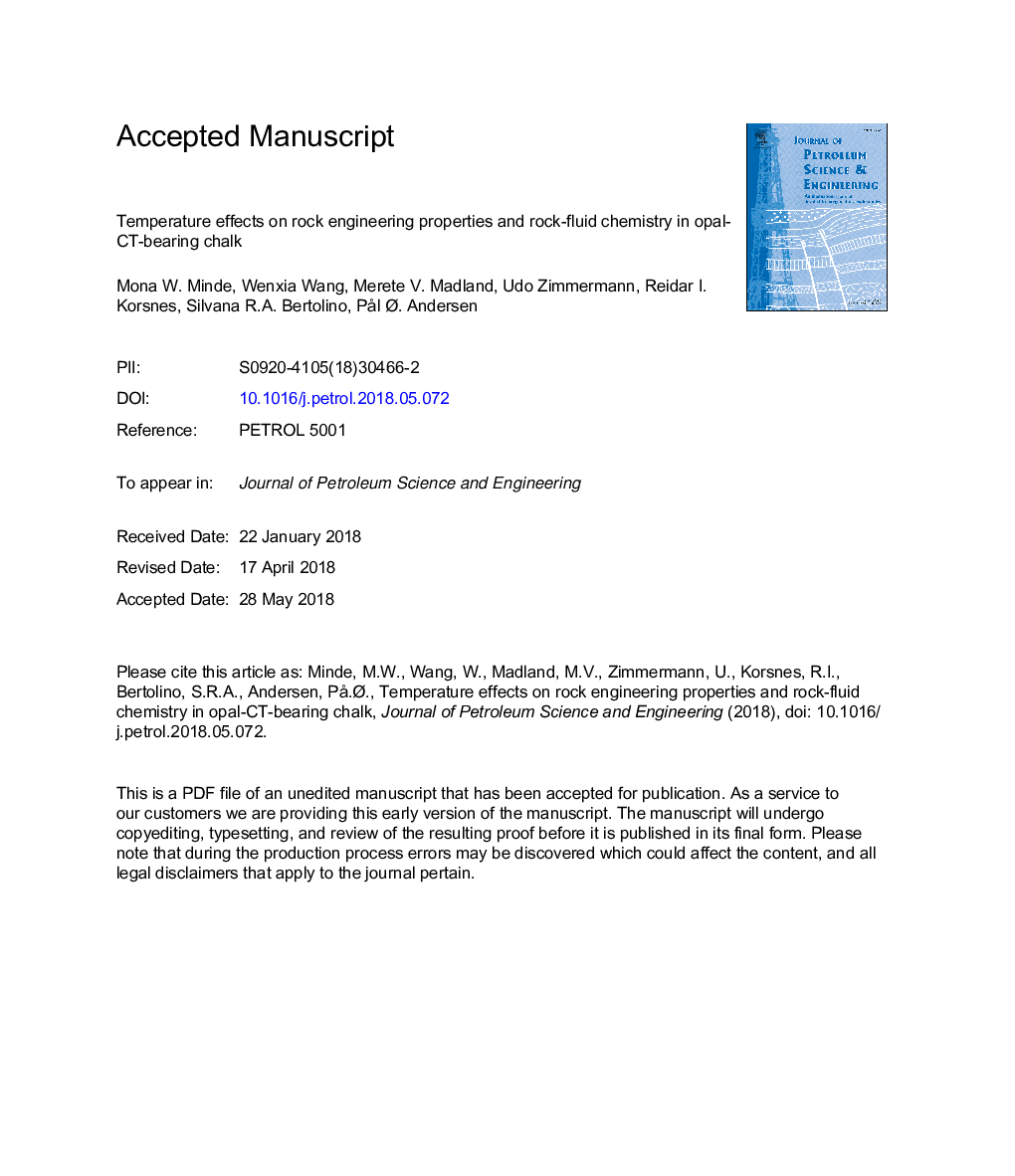| Article ID | Journal | Published Year | Pages | File Type |
|---|---|---|---|---|
| 8124585 | Journal of Petroleum Science and Engineering | 2018 | 48 Pages |
Abstract
The MgCl2 flooded cores show systematically higher creep rates at higher temperature and the cores tested at 25 and 60â¯Â°C show similar creep rates as the two NaCl flooded cores at 130â¯Â°C. All fluid-rock interactions were more pronounced at higher temperature. After flooding with MgCl2 at 110 and 130â¯Â°C newly formed magnesite is observed. In the cores tested at 25, 60 and 92â¯Â°C magnesite crystals have not been positively identified, but minute increases in MgO in whole-rock geochemistry analyses are seen. Si4+ originating from the dissolution of silica bearing phases (mainly diagenetic opal-CT), has taken part in the re-precipitation of Si-Mg-bearing minerals during MgCl2 injection from 25 to 130â¯Â°C, leading to an increase of the specific surface area. This is partly balanced by opal-CT dissolution, which should lower the specific surface area. The flaky Si-Mg-bearing minerals, covering significant portions of the pore surfaces and throats are the main drivers to reduce permeability in cores flooded at high temperatures. Additionally, in NaCl flooded cores where mineralogical changes are minute, the dissolution of parts of the existing opal-CT has lowered the SSA. At high temperatures, the following chemical changes must be carefully acknowledged when porosity reduction is calculated: calcite and opal-CT dissolution and precipitation of new minerals, particularly Mg-bearing minerals. The presence of opal-CT strongly influences the mineralogical alterations in flooded cores, hence the geo-mechanical evolution.
Related Topics
Physical Sciences and Engineering
Earth and Planetary Sciences
Economic Geology
Authors
Mona W. Minde, Wenxia Wang, Merete V. Madland, Udo Zimmermann, Reidar I. Korsnes, Silvana R.A. Bertolino, PÃ¥l Ã. Andersen,
